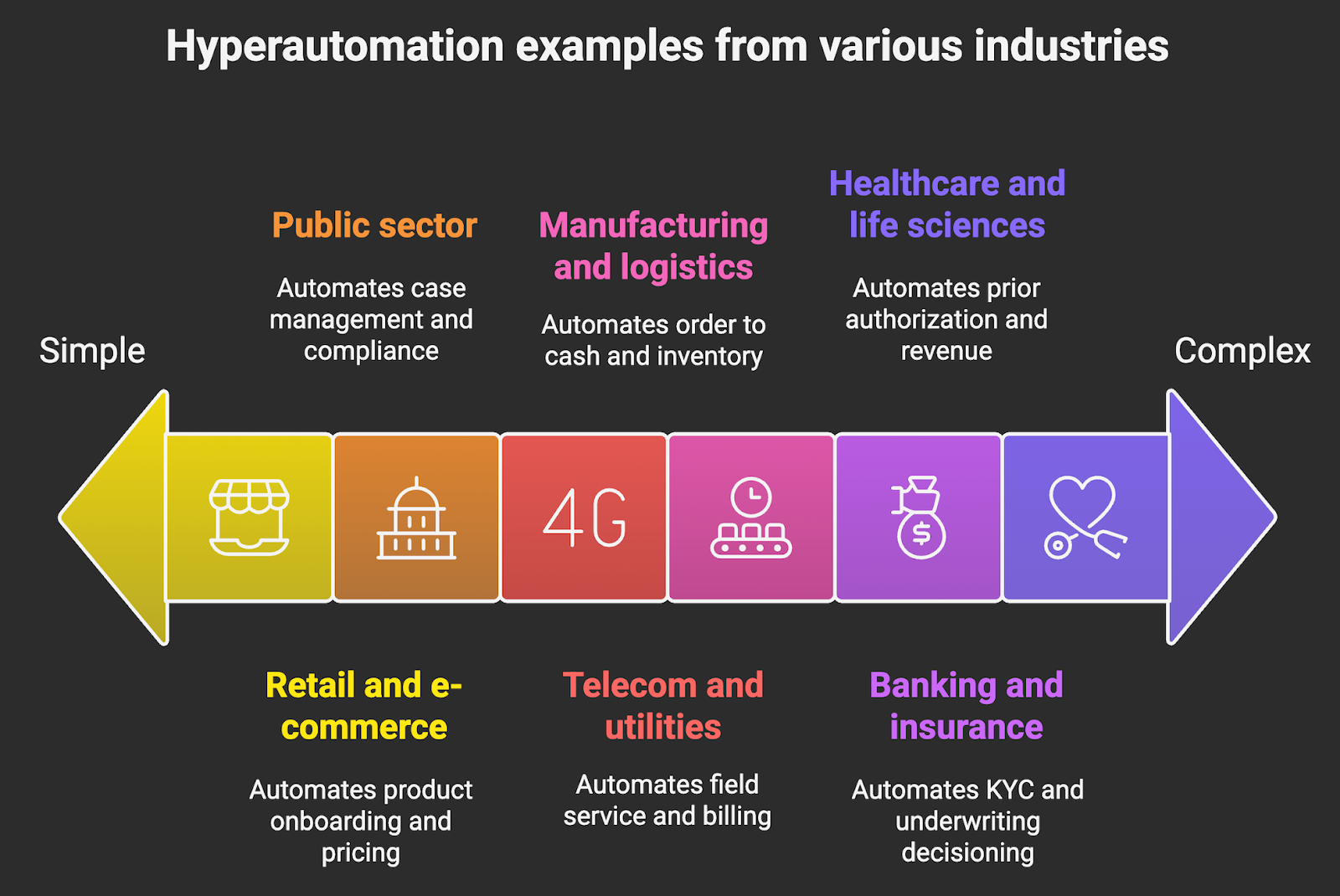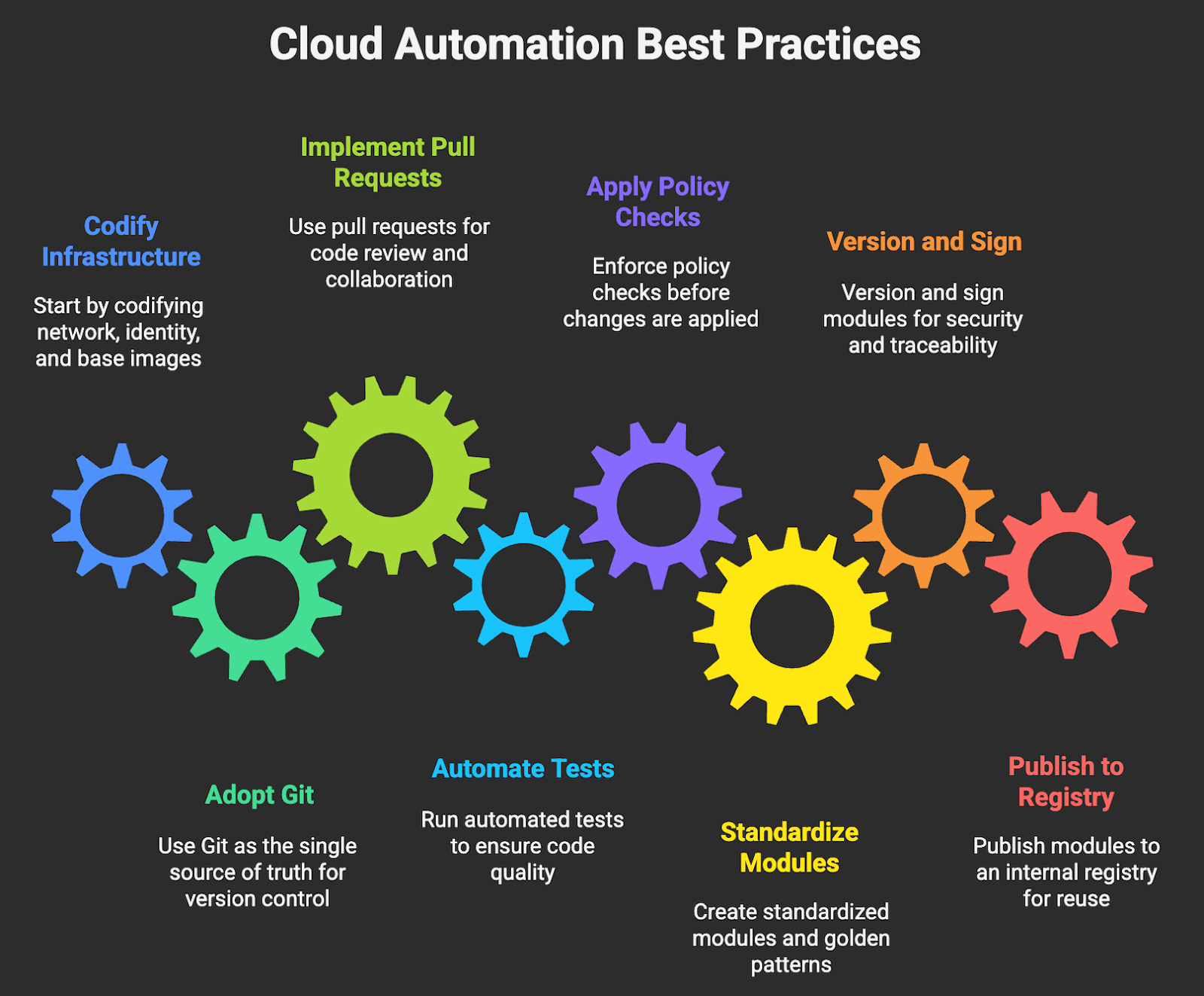Here is a concise playbook of IT trends automation insights you can act on now. You will find where AI automation delivers measurable value, what hyperautomation really means, how generative AI changes coding and testing, and the practical stacks behind cloud automation, AIOps, and cybersecurity automation.
Each section includes tool examples, selection criteria, and quick steps to lower the risk of adoption. If you are mapping IT trends in automation to concrete ROI this year, use this as your shortlist and execution guide.
1. AI Automation
AI amplifies automation by predicting, classifying, and optimizing decisions across workflows. Machine learning turns static rules into adaptive systems, so processes get faster and more accurate as data grows.
Common patterns include demand forecasting for capacity, document understanding for straight through processing, and anomaly detection to triage exceptions.
Here are 3 ways AI automation helps:
- Process optimization: apply process mining and task mining to discover bottlenecks, then automate the critical path.
- Decision automation: use supervised learning to classify emails, invoices, claims, or tickets; route or resolve automatically.
- Intelligent assistants: embed copilots for agents, engineers, and analysts to reduce handle time and rework.
Use Cases
Best practices
- Baseline the workflow with mining, choose one metric that matters, and set a target.
- Automate the high volume decision points first, keep humans in the loop for edge cases.
- Continuously retrain models and update business rules as behavior shifts.
2. Hyperautomation
Hyperautomation is the business driven approach to identify and automate as many processes as possible using a toolkit that spans RPA, low code, AI, and process mining. It orchestrates people, software robots, and decision models to deliver end to end outcomes, not just task level gains.
Why does it matter? It compounds value by chaining automations across departments, enforcing governance, and tracking value realization at the portfolio level.
Industries benefiting from hyperautomation
- Banking and insurance: KYC, claims, and underwriting decisioning with auditability.
- Healthcare and life sciences: Prior authorization, revenue cycle, pharmacovigilance.
- Manufacturing and logistics: Order to cash, inventory, predictive maintenance.
- Telecom and utilities: Field service, billing exceptions, network operations.
- Retail and e-commerce: Product onboarding, pricing, demand planning.
- Public sector: Case management, permitting, compliance reporting.

Best practices
- Create an automation backlog from process mining and stakeholder intake.
- Score candidates on value, feasibility, risk, and data readiness.
- Build a reusable component library and enforce standards, security, and testing.
- Track benefits per bot or workflow and retire low value automations.
3. Generative AI
Generative AI accelerates coding and testing, then augments documentation, code review, and migration. The most effective setup is developer + copilot + guardrails: humans focus on design and judgment, AI handles the repetitive work, and guardrails keep everything safe.
Where it helps most
- Coding: Platforms like GitHub Copilot, Amazon CodeWhisperer, and Google Duet AI suggest functions, boilerplate, and idioms inside the IDE. A controlled trial showed developers completed tasks up to 55 percent faster with Copilot.
- Testing: Tools like Tricentis Tosca, Mabl, and Testim use AI to generate resilient tests and reduce flakiness. Diffblue Cover writes Java unit tests automatically, useful for legacy code coverage.
How Generative AI Fits Into the Development Cycle
Risks and benefits of Generative AI in software development
a. Benefits:
- Faster cycle time
- Fewer defects caught late
- Better developer experience
b. Risks:
- Insecure suggestions,
- License contamination,
- Hallucinated APIs,
- Secret leakage in prompts.
Best practices
- Run a 4 week pilot on one repo with defined metrics, for example lead time, review time, escaped defects.
- Mandate SBOM, SAST, and secret scanning on every PR. Adopt NIST secure software development practices for governance (e.g. NIST SP 800 218 SSDF framework).
- Create an allow list of packages and a prompt hygiene policy. Log assistant outputs for audit.
4. No-Code and Low-Code Automation
No code and low code platforms let business technologists assemble apps and automations with visual builders and prebuilt connectors. You reserve pro code talent for complex systems while empowering teams to ship fast under governance.
Benefits for the business
- Faster time to value for internal tools and workflow digitization.
- Lower backlog on IT, with central guardrails for data, security, and reuse.
- Closer fit to business needs through iterative co design with users.
No-Code / Low-Code Platforms
Best practices
- Stand up a Center of Enablement with templates, data policies, and an architecture review board.
- Segment environments by risk, for example sandbox, departmental, enterprise critical.
- Track value by app and flow, retire or refactor when usage drops.
5. Cloud Automation
Cloud automation uses infrastructure as code, policy as code, and GitOps to provision, configure, and operate cloud resources consistently. It reduces drift, speeds delivery, and creates auditable change histories.
Platforms for Cloud Automation
- Infrastructure as code: Terraform, AWS CloudFormation, Azure Bicep, Google Cloud Deployment Manager.
- Configuration and orchestration: Ansible, Puppet, Chef for OS and middleware; Kubernetes with Argo CD or Flux for GitOps.
- Operations automation: AWS Systems Manager, Azure Automation, Google Cloud Config Connector for policy enforcement and routine jobs.
Best practices
- Codify everything that moves. Start with network, identity, and base images, then app stacks.
- Adopt Git as the single source of truth. Use pull requests, automated tests, and policy checks before changes apply.
- Standardize modules and golden patterns. Version and sign them, then publish to an internal registry.

6. Autonomous IT Operations (AIOps)
AIOps applies machine learning to event correlation, anomaly detection, and root cause analysis across logs, metrics, traces, and topology. The outcome is fewer incidents, faster resolution, and less toil at scale.
Tools for AIOps
Best practices
- Unify telemetry. Stream logs, metrics, traces, and topology into a common platform.
- Start with top 10 noisy alerts, build correlation rules or let the platform learn patterns, then automate the first remediations.
- Measure MTTR, change failure rate, and alert volume, publish weekly scorecards.
7. Cybersecurity Automation
Cybersecurity protects the confidentiality, integrity, and availability of systems and data; automation scales detection, response, and recovery. The combination of SIEM, EDR or XDR, and SOAR speeds containment and reduces dwell time.
Why automate
Playbooks for triage, enrichment, and containment transform response from minutes to seconds. NIST recommends standardized processes and tooling for incident handling, which automation enforces NIST SP 800 61 incident handling guidance.
Common stack
- SIEM. Microsoft Sentinel, Splunk Enterprise Security, Google Chronicle.
- EDR or XDR. Microsoft Defender for Endpoint, CrowdStrike Falcon, SentinelOne.
- SOAR. Palo Alto Cortex XSOAR, Splunk SOAR, IBM QRadar SOAR.
Use cases for cybersecurity automation
Best practices
- Map detections and playbooks to MITRE ATT&CK techniques.
- Automate containment with human approval, then graduate to fully automated for high confidence detections.
- Measure time to detect, time to respond, and false positive rates monthly; tune continuously.
Stay ahead with Makeitfuture's IT automation solutions
The signal across these trends is clear. Pair data driven discovery with the right automation method, instrument outcomes, then scale what works. AI automation, hyperautomation portfolios, responsible generative AI, governed low code, codified cloud, AIOps, and cybersecurity automation form a coherent operating model. Start small, learn fast, and compound value.
Makeitfuture helps leaders turn these trends into outcomes with reference architectures, rapid pilots, and value tracking. We design and implement automation that your teams can operate with confidence. Explore our intelligent automation services for a deeper look at how we deliver AI driven efficiency and resilience.
If you want proof before you scale, review selected case studies that show reduced cycle time, improved accuracy, and lower operating costs in production environments.














.png)
.png)



.avif)
